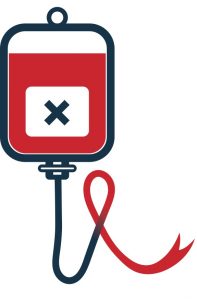The Inquiry began with a presentation by Counsel about the first Cardiff AIDS patient, Kevin Slater. This patient is understood to be the first haemophiliac in the UK to suffer from AIDS.
Counsel highlighted that he was a young man with his whole life in front of him, 20 when he developed symptoms and 22 when he died. His brother Paul was also infected and died from AIDS at the age of 30. The Inquiry thanked Kevin and Paul’s family for their help and for agreeing to name the brothers for the Inquiry. Counsel said that the purpose of this presentation was to ascertain what was known and understood by others in relation to Kevin’s case. The presentation would focus on the Development and identification of Kevin’s illness in 1983 and 1984 and how his condition was understood and presented by people aware of it.
Hospital records from the 15th March 1983 showed that the patient had been unwell since Christmas with symptoms recorded such as reflux, significant weight loss and loss of energy. Following this, laboratory records from 17th of March recorded AIDS as a potential diagnosis. Counsel presented a letter from the 22nd March 1983 from the UKHCDO to Haemophilia Centre Directors, a letter co-authored by Professor Bloom. The letter invited Directors to report any possible cases of AIDS and report patients suffering from various symptoms. In April 1983, Professor Bloom gave a talk at a meeting; he said he did not know of any haemophiliacs in the UK with AIDS and so it would be absolutely wrong to curtail treatment. At the same meeting, Professor Bloom contradictingly said that one of his patients may have a mild form of AIDS.
On the 25th April, Kevin was admitted as an inpatient with various symptoms. The doctors recorded once more AIDS as a suggested diagnosis on Kevin’s notes. Nursing records from the same date also referred to AIDS being a possible diagnosis. On 26th April Professor completed the form the UKHDCO had sent out for reporting potential cases for Kevin. The date noted of the disease being first suspected was the 17th March 1983. In the form Professor Bloom recorded the case as “probable AIDS”. Sir Brian noted if one were applying the legal test of probability, this would suggest Professor Bloom was confirming the patient did have AIDS. However, in a publication by the Haemophilia Society on 4th May, Professor Bloom is recorded saying that he is unaware of any proven cases in this country.
A meeting in the Welsh Office on 4th May was held where Kevin’s case was discussed. Kevin’s case was described as a clinical picture within the CDSC definition. A letter about this advised that this patient does meet the definition but there is no proven link between AIDS and blood transfusion proved by this. On 13th May 1983 at a special meeting of Haemophilia Reference Centre Directors, it was noted that one case of AIDS in a haemophiliac in the UK was suspected. Moreover, at a meeting of an Expert Committee on Blood Transfusion and Immuno-Haemotology at the Council of Europe the same month, they recorded there was one patient in the UK with symptoms, this one case referred to Kevin. A DHS document noted there was no conclusive proof of AIDs being transmitted through blood products. It referred to one suspect case in Cardiff. It stated that although CDSC states this case as AIDS, the clinician in charge does not consider it should be regarded as a confirmed case. Kevin’s case was included by the Department of Health in tables compiled to track cases on July 6th, with the date Kevin’s case reported as May 1983.
On June 17th Kevin was readmitted into hospital and AIDS was recorded on his notes. A June UKHCDO letter from Professor Bloom to other Directors said there was so far one possible case among haemophiliacs, the patient conformed to the CDSC definition but cannot be considered a definitine case. Kevin’s health continues to deteriorate, on admission to hospital on October 17th, known AIDS was recorded. A BMJ surveillance article from August 1983 set out Kevin’s case as an accepted case of AIDS.
Kevin’s health continued to deteriorate, as was made clear in medical records from October 1983, his case was identified in the medical records as a known AIDS case on this occasion. A Haemophilia Society meeting noted that the Cardiff case was now confirmed in December 1983. Also, a report the same month in the BMJ referred to Kevin’s case as well as a case in Bristol. There were repeated hospital admissions for Kevin over 1984; what is not possible to find in the documents is any record of communication from Doctors to Kevin about an AIDS diagnosis. A DHSS application form sent to Professor Bloom and filled for Kevin in 1984 requested the fact Kevin had AIDS to not be disclosed to him if a copy of the application was sent to him. This could suggest that as late as October 1984, Kevin was not aware of his diagnosis. There was a formal positive test for HTLV 3 reported for Kevin on December 12th December 1984, but there may have been an earlier positive test on stored samples. Kevin continued to be in and out of hospital in 1985, until his final admission in June, and death on 23rd June at the age of 22.

